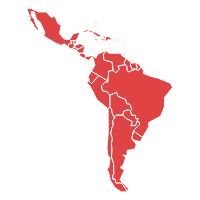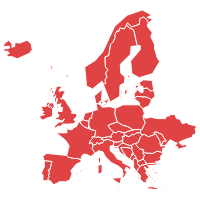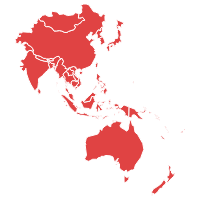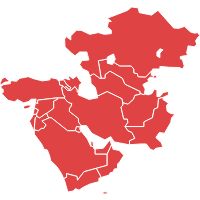- Infusion Pumps
- Needleless Connectors
- Intravenous Sets
- Others
Home Infusion Therapy Devices Market size was valued at USD 23.3 billion in 2022 and is poised to grow at a CAGR of 11% from 2023-2029. Infusion therapy has become a common technique of pain relief, particularly for conditions when oral medicine is ineffective. The medication is frequently given intravenously or subcutaneously in this method. Patients are converting from traditional therapies to specialized infusion therapy treatments as a result of technological advancements. Home infusion therapy devices are used to administer drug solutions to treat various diseases that are unresponsive to oral medication such as gastrointestinal diseases, cancer, and pain. Home infusion therapy declines unplanned hospitalization and also improves the medication adherence. Most commonly used home infusion therapy devices for drug administration include intravenous sets, needleless connectors, and infusion pumps among others. Due to increase in the prevalence of chronic diseases majorly diabetes and cancer and an increase in awareness are anticipated to fuel the home infusion therapy devices market over the forecast period. Moreover, technological advancements such as the introduction of smart pumps that enhance the overall ease of using home infusion devices are expected to drive market revenue. Furthermore, acquisitions and mergers, collaborations, and product launches are the key strategies followed by the market players for generating larger revenue in the home infusion therapy devices market. For instance, in March 2016, PromptCare acquired Boston Home Infusion to expand its product portfolio in the Boston area. Similarly, in October 2016, ICU Medical Inc. acquired Hospira Infusion Systems to strengthen its home infusion therapy devices portfolio.
Home Infusion Therapy Devices Market Key Developments:
- In April 2017, Becton, Dickinson and Company acquired Caesarea Medical Electronics to strengthen infusion system portfolio including home infusion therapy devices
Home Infusion Therapy Devices Market Summary
Study Period
2024-2030
Base Year
2023
CAGR
11%
Largest Market
North America
Fastest Growing Market
Asia Pacific
Home Infusion Therapy Devices Market Dynamics
Increase in the demand for home infusion therapy from patients, high cost for hospitalization treatment, a wide range of applications with infusion devices, and presence of unmet medical needs are anticipated to fuel the home infusion therapy devices market over the forecast period. Moreover, increase in geriatric population, technological developments in home infusion therapy devices, and high prevalence of chronic diseases like diabetes and cancer are expected to boost the home infusion therapy devices market over the forecast period. However, the risk associated with the drug administration, product recalls, unfavorable reimbursement policies and misguidance about the usage of the device are impede the growth of home infusion therapy devices market over the forecast years.
Key Features of the Reports
- The report provides granular level information about the market size, regional market share, historic market (2019-2023), and forecast (2024-2030)
- The report covers in-detail insights about the competitor's overview, company share analysis, key market developments, and their key strategies
- The report outlines drivers, restraints, unmet needs, and trends that are currently affecting the market
- The report tracks recent innovations, key developments, and start-up details that are actively working in the market
- The report provides a plethora of information about market entry strategies, regulatory framework, and reimbursement scenario

Home Infusion Therapy Devices Market Segmentation
By Device
By Pump Type
- Enteral Infusion Pumps
- Insulin Infusion Pumps
- Syringe Infusion Pumps
- Patient-Controlled Analgesia
- Volumetric Infusion Pumps
- Others
By Application
- Infectious Diseases
- Pain Management
- Nutrition
- Chemotherapy
- Others
By Distribution Channel
- Hospital Pharmacies
- Retail Pharmacies
- Online Pharmacies
Frequently Asked Questions
The home infusion therapy devices market is projected to expand at a CAGR of 11% during the forecast period
Fresenius Kabi AG, Braun Melsungen AG, ICU Medical, Inc, Terumo Corporation, JMS Co. Ltd.
North America is the fastest-growing region for home infusion therapy devices market
| 1. Executive Summary |
| 2. Global Home Infusion Therapy Devices Market Introduction |
| 2.1.Global Home Infusion Therapy Devices Market - Taxonomy |
| 2.2.Global Home Infusion Therapy Devices Market - Definitions |
| 2.2.1.Device |
| 2.2.2.Pump Type |
| 2.2.3.Application |
| 2.2.4.Distribution Channel |
| 2.2.5.Region |
| 3. Global Home Infusion Therapy Devices Market Dynamics |
| 3.1. Drivers |
| 3.2. Restraints |
| 3.3. Opportunities/Unmet Needs of the Market |
| 3.4. Trends |
| 3.5. Product Landscape |
| 3.6. New Product Launches |
| 3.7. Impact of COVID 19 on Market |
| 4. Global Home Infusion Therapy Devices Market Analysis, 2018 - 2022 and Forecast 2023 - 2029 |
| 4.1. Market Analysis, 2018 - 2022 and Forecast, 2023 - 2029, (Sales Value USD Million) |
| 4.2. Year-Over-Year (Y-o-Y) Growth Analysis (%) |
| 4.3. Market Opportunity Analysis |
| 5. Global Home Infusion Therapy Devices Market By Device, 2018 - 2022 and Forecast 2023 - 2029 (Sales Value USD Million) |
| 5.1. Infusion Pumps |
| 5.1.1. Market Analysis, 2018 - 2022 and Forecast, 2023 - 2029, (Sales Value USD Million) |
| 5.1.2. Year-Over-Year (Y-o-Y) Growth Analysis (%) and Market Share Analysis (%) |
| 5.1.3. Market Opportunity Analysis |
| 5.2. Needleless Connectors |
| 5.2.1. Market Analysis, 2018 - 2022 and Forecast, 2023 - 2029, (Sales Value USD Million) |
| 5.2.2. Year-Over-Year (Y-o-Y) Growth Analysis (%) and Market Share Analysis (%) |
| 5.2.3. Market Opportunity Analysis |
| 5.3. Intravenous Sets |
| 5.3.1. Market Analysis, 2018 - 2022 and Forecast, 2023 - 2029, (Sales Value USD Million) |
| 5.3.2. Year-Over-Year (Y-o-Y) Growth Analysis (%) and Market Share Analysis (%) |
| 5.3.3. Market Opportunity Analysis |
| 5.4. Others |
| 5.4.1. Market Analysis, 2018 - 2022 and Forecast, 2023 - 2029, (Sales Value USD Million) |
| 5.4.2. Year-Over-Year (Y-o-Y) Growth Analysis (%) and Market Share Analysis (%) |
| 5.4.3. Market Opportunity Analysis |
| 6. Global Home Infusion Therapy Devices Market By Pump Type, 2018 - 2022 and Forecast 2023 - 2029 (Sales Value USD Million) |
| 6.1. Enteral Infusion Pumps |
| 6.1.1. Market Analysis, 2018 - 2022 and Forecast, 2023 - 2029, (Sales Value USD Million) |
| 6.1.2. Year-Over-Year (Y-o-Y) Growth Analysis (%) and Market Share Analysis (%) |
| 6.1.3. Market Opportunity Analysis |
| 6.2. Insulin Infusion Pumps |
| 6.2.1. Market Analysis, 2018 - 2022 and Forecast, 2023 - 2029, (Sales Value USD Million) |
| 6.2.2. Year-Over-Year (Y-o-Y) Growth Analysis (%) and Market Share Analysis (%) |
| 6.2.3. Market Opportunity Analysis |
| 6.3. Syringe Infusion Pumps |
| 6.3.1. Market Analysis, 2018 - 2022 and Forecast, 2023 - 2029, (Sales Value USD Million) |
| 6.3.2. Year-Over-Year (Y-o-Y) Growth Analysis (%) and Market Share Analysis (%) |
| 6.3.3. Market Opportunity Analysis |
| 6.4. Patient-Controlled Analgesia |
| 6.4.1. Market Analysis, 2018 - 2022 and Forecast, 2023 - 2029, (Sales Value USD Million) |
| 6.4.2. Year-Over-Year (Y-o-Y) Growth Analysis (%) and Market Share Analysis (%) |
| 6.4.3. Market Opportunity Analysis |
| 6.5. Volumetric Infusion Pumps |
| 6.5.1. Market Analysis, 2018 - 2022 and Forecast, 2023 - 2029, (Sales Value USD Million) |
| 6.5.2. Year-Over-Year (Y-o-Y) Growth Analysis (%) and Market Share Analysis (%) |
| 6.5.3. Market Opportunity Analysis |
| 6.6. Others |
| 6.6.1. Market Analysis, 2018 - 2022 and Forecast, 2023 - 2029, (Sales Value USD Million) |
| 6.6.2. Year-Over-Year (Y-o-Y) Growth Analysis (%) and Market Share Analysis (%) |
| 6.6.3. Market Opportunity Analysis |
| 7. Global Home Infusion Therapy Devices Market By Application, 2018 - 2022 and Forecast 2023 - 2029 (Sales Value USD Million) |
| 7.1. Infectious Diseases |
| 7.1.1. Market Analysis, 2018 - 2022 and Forecast, 2023 - 2029, (Sales Value USD Million) |
| 7.1.2. Year-Over-Year (Y-o-Y) Growth Analysis (%) and Market Share Analysis (%) |
| 7.1.3. Market Opportunity Analysis |
| 7.2. Pain Management |
| 7.2.1. Market Analysis, 2018 - 2022 and Forecast, 2023 - 2029, (Sales Value USD Million) |
| 7.2.2. Year-Over-Year (Y-o-Y) Growth Analysis (%) and Market Share Analysis (%) |
| 7.2.3. Market Opportunity Analysis |
| 7.3. Nutrition |
| 7.3.1. Market Analysis, 2018 - 2022 and Forecast, 2023 - 2029, (Sales Value USD Million) |
| 7.3.2. Year-Over-Year (Y-o-Y) Growth Analysis (%) and Market Share Analysis (%) |
| 7.3.3. Market Opportunity Analysis |
| 7.4. Chemotherapy |
| 7.4.1. Market Analysis, 2018 - 2022 and Forecast, 2023 - 2029, (Sales Value USD Million) |
| 7.4.2. Year-Over-Year (Y-o-Y) Growth Analysis (%) and Market Share Analysis (%) |
| 7.4.3. Market Opportunity Analysis |
| 7.5. Others |
| 7.5.1. Market Analysis, 2018 - 2022 and Forecast, 2023 - 2029, (Sales Value USD Million) |
| 7.5.2. Year-Over-Year (Y-o-Y) Growth Analysis (%) and Market Share Analysis (%) |
| 7.5.3. Market Opportunity Analysis |
| 8. Global Home Infusion Therapy Devices Market By Distribution Channel, 2018 - 2022 and Forecast 2023 - 2029 (Sales Value USD Million) |
| 8.1. Hospital Pharmacies |
| 8.1.1. Market Analysis, 2018 - 2022 and Forecast, 2023 - 2029, (Sales Value USD Million) |
| 8.1.2. Year-Over-Year (Y-o-Y) Growth Analysis (%) and Market Share Analysis (%) |
| 8.1.3. Market Opportunity Analysis |
| 8.2. Retail Pharmacies |
| 8.2.1. Market Analysis, 2018 - 2022 and Forecast, 2023 - 2029, (Sales Value USD Million) |
| 8.2.2. Year-Over-Year (Y-o-Y) Growth Analysis (%) and Market Share Analysis (%) |
| 8.2.3. Market Opportunity Analysis |
| 8.3. Online Pharmacies |
| 8.3.1. Market Analysis, 2018 - 2022 and Forecast, 2023 - 2029, (Sales Value USD Million) |
| 8.3.2. Year-Over-Year (Y-o-Y) Growth Analysis (%) and Market Share Analysis (%) |
| 8.3.3. Market Opportunity Analysis |
| 9. Global Home Infusion Therapy Devices Market By Region, 2018 - 2022 and Forecast 2023 - 2029 (Sales Value USD Million) |
| 9.1. North America |
| 9.1.1. Market Analysis, 2018 - 2022 and Forecast, 2023 - 2029, (Sales Value USD Million) |
| 9.1.2. Year-Over-Year (Y-o-Y) Growth Analysis (%) and Market Share Analysis (%) |
| 9.1.3. Market Opportunity Analysis |
| 9.2. Europe |
| 9.2.1. Market Analysis, 2018 - 2022 and Forecast, 2023 - 2029, (Sales Value USD Million) |
| 9.2.2. Year-Over-Year (Y-o-Y) Growth Analysis (%) and Market Share Analysis (%) |
| 9.2.3. Market Opportunity Analysis |
| 9.3. Asia Pacific (APAC) |
| 9.3.1. Market Analysis, 2018 - 2022 and Forecast, 2023 - 2029, (Sales Value USD Million) |
| 9.3.2. Year-Over-Year (Y-o-Y) Growth Analysis (%) and Market Share Analysis (%) |
| 9.3.3. Market Opportunity Analysis |
| 9.4. Middle East and Africa (MEA) |
| 9.4.1. Market Analysis, 2018 - 2022 and Forecast, 2023 - 2029, (Sales Value USD Million) |
| 9.4.2. Year-Over-Year (Y-o-Y) Growth Analysis (%) and Market Share Analysis (%) |
| 9.4.3. Market Opportunity Analysis |
| 9.5. Latin America |
| 9.5.1. Market Analysis, 2018 - 2022 and Forecast, 2023 - 2029, (Sales Value USD Million) |
| 9.5.2. Year-Over-Year (Y-o-Y) Growth Analysis (%) and Market Share Analysis (%) |
| 9.5.3. Market Opportunity Analysis |
| 10. North America Home Infusion Therapy Devices Market ,2018 - 2022 and Forecast 2023 - 2029 (Sales Value USD Million) |
| 10.1. Device Analysis 2018 - 2022 and Forecast 2023 - 2029 by Sales Value USD Million, Y-o-Y Growth (%), and Market Share (%) |
| 10.1.1.Infusion Pumps |
| 10.1.2.Needleless Connectors |
| 10.1.3.Intravenous Sets |
| 10.1.4.Others |
| 10.2. Pump Type Analysis 2018 - 2022 and Forecast 2023 - 2029 by Sales Value USD Million, Y-o-Y Growth (%), and Market Share (%) |
| 10.2.1.Enteral Infusion Pumps |
| 10.2.2.Insulin Infusion Pumps |
| 10.2.3.Syringe Infusion Pumps |
| 10.2.4.Patient-Controlled Analgesia |
| 10.2.5.Volumetric Infusion Pumps |
| 10.2.6.Others |
| 10.3. Application Analysis 2018 - 2022 and Forecast 2023 - 2029 by Sales Value USD Million, Y-o-Y Growth (%), and Market Share (%) |
| 10.3.1.Infectious Diseases |
| 10.3.2.Pain Management |
| 10.3.3.Nutrition |
| 10.3.4.Chemotherapy |
| 10.3.5.Others |
| 10.4. Distribution Channel Analysis 2018 - 2022 and Forecast 2023 - 2029 by Sales Value USD Million, Y-o-Y Growth (%), and Market Share (%) |
| 10.4.1.Hospital Pharmacies |
| 10.4.2.Retail Pharmacies |
| 10.4.3.Online Pharmacies |
| 10.5. Country Analysis 2018 - 2022 and Forecast 2023 - 2029 by Sales Value USD Million, Y-o-Y Growth (%), and Market Share (%) |
| 10.5.1.United States of America (USA) |
| 10.5.2.Canada |
| 11. Europe Home Infusion Therapy Devices Market ,2018 - 2022 and Forecast 2023 - 2029 (Sales Value USD Million) |
| 11.1. Device Analysis and Forecast by Sales Value USD Million, Y-o-Y Growth (%), and Market Share (%) |
| 11.1.1.Infusion Pumps |
| 11.1.2.Needleless Connectors |
| 11.1.3.Intravenous Sets |
| 11.1.4.Others |
| 11.2. Pump Type Analysis 2018 - 2022 and Forecast 2023 - 2029 by Sales Value USD Million, Y-o-Y Growth (%), and Market Share (%) |
| 11.2.1.Enteral Infusion Pumps |
| 11.2.2.Insulin Infusion Pumps |
| 11.2.3.Syringe Infusion Pumps |
| 11.2.4.Patient-Controlled Analgesia |
| 11.2.5.Volumetric Infusion Pumps |
| 11.2.6.Others |
| 11.3. Application Analysis 2018 - 2022 and Forecast 2023 - 2029 by Sales Value USD Million, Y-o-Y Growth (%), and Market Share (%) |
| 11.3.1.Infectious Diseases |
| 11.3.2.Pain Management |
| 11.3.3.Nutrition |
| 11.3.4.Chemotherapy |
| 11.3.5.Others |
| 11.4. Distribution Channel Analysis 2018 - 2022 and Forecast 2023 - 2029 by Sales Value USD Million, Y-o-Y Growth (%), and Market Share (%) |
| 11.4.1.Hospital Pharmacies |
| 11.4.2.Retail Pharmacies |
| 11.4.3.Online Pharmacies |
| 11.5. Country Analysis 2018 - 2022 and Forecast 2023 - 2029 by Sales Value USD Million, Y-o-Y Growth (%), and Market Share (%) |
| 11.5.1.Germany |
| 11.5.2.France |
| 11.5.3.Italy |
| 11.5.4.United Kingdom (UK) |
| 11.5.5.Spain |
| 11.5.6.Rest of EU |
| 11.5.7. |
| 12. Asia Pacific (APAC) Home Infusion Therapy Devices Market ,2018 - 2022 and Forecast 2023 - 2029 (Sales Value USD Million) |
| 12.1. Device Analysis and Forecast by Sales Value USD Million, Y-o-Y Growth (%), and Market Share (%) |
| 12.1.1.Infusion Pumps |
| 12.1.2.Needleless Connectors |
| 12.1.3.Intravenous Sets |
| 12.1.4.Others |
| 12.2. Pump Type Analysis 2018 - 2022 and Forecast 2023 - 2029 by Sales Value USD Million, Y-o-Y Growth (%), and Market Share (%) |
| 12.2.1.Enteral Infusion Pumps |
| 12.2.2.Insulin Infusion Pumps |
| 12.2.3.Syringe Infusion Pumps |
| 12.2.4.Patient-Controlled Analgesia |
| 12.2.5.Volumetric Infusion Pumps |
| 12.2.6.Others |
| 12.3. Application Analysis 2018 - 2022 and Forecast 2023 - 2029 by Sales Value USD Million, Y-o-Y Growth (%), and Market Share (%) |
| 12.3.1.Infectious Diseases |
| 12.3.2.Pain Management |
| 12.3.3.Nutrition |
| 12.3.4.Chemotherapy |
| 12.3.5.Others |
| 12.4. Distribution Channel Analysis 2018 - 2022 and Forecast 2023 - 2029 by Sales Value USD Million, Y-o-Y Growth (%), and Market Share (%) |
| 12.4.1.Hospital Pharmacies |
| 12.4.2.Retail Pharmacies |
| 12.4.3.Online Pharmacies |
| 12.5. Country Analysis 2018 - 2022 and Forecast 2023 - 2029 by Sales Value USD Million, Y-o-Y Growth (%), and Market Share (%) |
| 12.5.1.China |
| 12.5.2.India |
| 12.5.3.Australia and New Zealand (ANZ) |
| 12.5.4.Japan |
| 12.5.5.Rest of APAC |
| 13. Middle East and Africa (MEA) Home Infusion Therapy Devices Market ,2018 - 2022 and Forecast 2023 - 2029 (Sales Value USD Million) |
| 13.1. Device Analysis and Forecast by Sales Value USD Million, Y-o-Y Growth (%), and Market Share (%) |
| 13.1.1.Infusion Pumps |
| 13.1.2.Needleless Connectors |
| 13.1.3.Intravenous Sets |
| 13.1.4.Others |
| 13.2. Pump Type Analysis 2018 - 2022 and Forecast 2023 - 2029 by Sales Value USD Million, Y-o-Y Growth (%), and Market Share (%) |
| 13.2.1.Enteral Infusion Pumps |
| 13.2.2.Insulin Infusion Pumps |
| 13.2.3.Syringe Infusion Pumps |
| 13.2.4.Patient-Controlled Analgesia |
| 13.2.5.Volumetric Infusion Pumps |
| 13.2.6.Others |
| 13.3. Application Analysis 2018 - 2022 and Forecast 2023 - 2029 by Sales Value USD Million, Y-o-Y Growth (%), and Market Share (%) |
| 13.3.1.Infectious Diseases |
| 13.3.2.Pain Management |
| 13.3.3.Nutrition |
| 13.3.4.Chemotherapy |
| 13.3.5.Others |
| 13.4. Distribution Channel Analysis 2018 - 2022 and Forecast 2023 - 2029 by Sales Value USD Million, Y-o-Y Growth (%), and Market Share (%) |
| 13.4.1.Hospital Pharmacies |
| 13.4.2.Retail Pharmacies |
| 13.4.3.Online Pharmacies |
| 13.5. Country Analysis 2018 - 2022 and Forecast 2023 - 2029 by Sales Value USD Million, Y-o-Y Growth (%), and Market Share (%) |
| 13.5.1.GCC Countries |
| 13.5.2.South Africa |
| 13.5.3.Rest of MEA |
| 14. Latin America Home Infusion Therapy Devices Market ,2018 - 2022 and Forecast 2023 - 2029 (Sales Value USD Million) |
| 14.1. Device Analysis and Forecast by Sales Value USD Million, Y-o-Y Growth (%), and Market Share (%) |
| 14.1.1.Infusion Pumps |
| 14.1.2.Needleless Connectors |
| 14.1.3.Intravenous Sets |
| 14.1.4.Others |
| 14.2. Pump Type Analysis 2018 - 2022 and Forecast 2023 - 2029 by Sales Value USD Million, Y-o-Y Growth (%), and Market Share (%) |
| 14.2.1.Enteral Infusion Pumps |
| 14.2.2.Insulin Infusion Pumps |
| 14.2.3.Syringe Infusion Pumps |
| 14.2.4.Patient-Controlled Analgesia |
| 14.2.5.Volumetric Infusion Pumps |
| 14.2.6.Others |
| 14.3. Application Analysis 2018 - 2022 and Forecast 2023 - 2029 by Sales Value USD Million, Y-o-Y Growth (%), and Market Share (%) |
| 14.3.1.Infectious Diseases |
| 14.3.2.Pain Management |
| 14.3.3.Nutrition |
| 14.3.4.Chemotherapy |
| 14.3.5.Others |
| 14.4. Distribution Channel Analysis 2018 - 2022 and Forecast 2023 - 2029 by Sales Value USD Million, Y-o-Y Growth (%), and Market Share (%) |
| 14.4.1.Hospital Pharmacies |
| 14.4.2.Retail Pharmacies |
| 14.4.3.Online Pharmacies |
| 14.5. Country Analysis 2018 - 2022 and Forecast 2023 - 2029 by Sales Value USD Million, Y-o-Y Growth (%), and Market Share (%) |
| 14.5.1.Brazil |
| 14.5.2.Mexico |
| 14.5.3.Rest of LA |
| 15. Competition Landscape |
| 15.1. Market Player Profiles (Introduction, Brand/Product Sales, Financial Analysis, Product Offerings, Key Developments, Collaborations, M & A, Strategies, and SWOT Analysis) |
| 15.2.1.Fresenius Kabi AG (Germany) |
| 15.2.2.Braun Melsungen AG (Germany) |
| 15.2.3.ICU Medical, Inc. (U.S.) |
| 15.2.4.Terumo Corporation (Japan) |
| 15.2.5.JMS Co. Ltd. (Japan) |
| 15.2.6.Smiths Medical (U.S.) |
| 15.2.7.Baxter International Inc. (U.S.) |
| 15.2.8.Caesarea Medical Electronics Ltd. (Becton, Dickinson and Company) (U.S.) |
| 16. Research Methodology |
| 17. Appendix and Abbreviations |
- Fresenius Kabi AG (Germany)
- Braun Melsungen AG (Germany)
- ICU Medical, Inc. (U.S.)
- Terumo Corporation (Japan)
- JMS Co. Ltd. (Japan)
- Smiths Medical (U.S.)
- Baxter International Inc. (U.S.)
- Caesarea Medical Electronics Ltd. (Becton, Dickinson and Company) (U.S.)
- Hoffmann-La Roche Ltd. (Switzerland)




